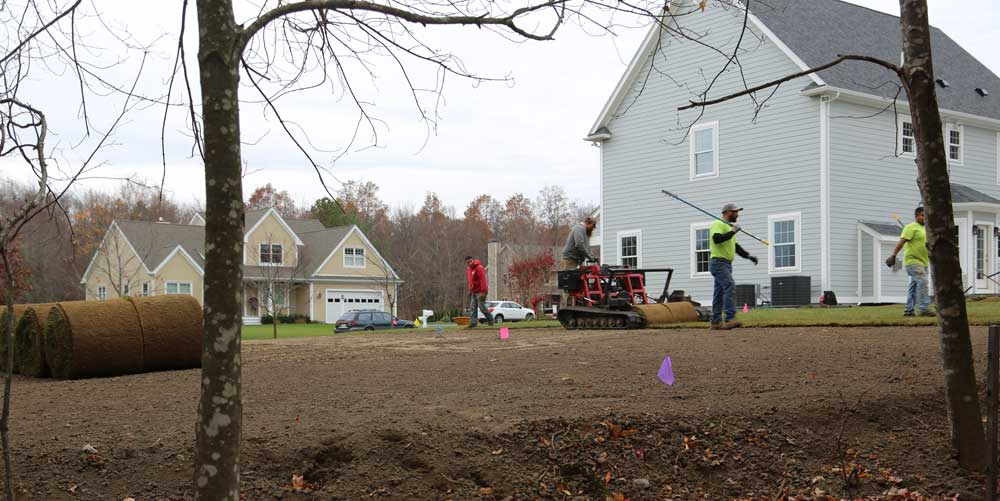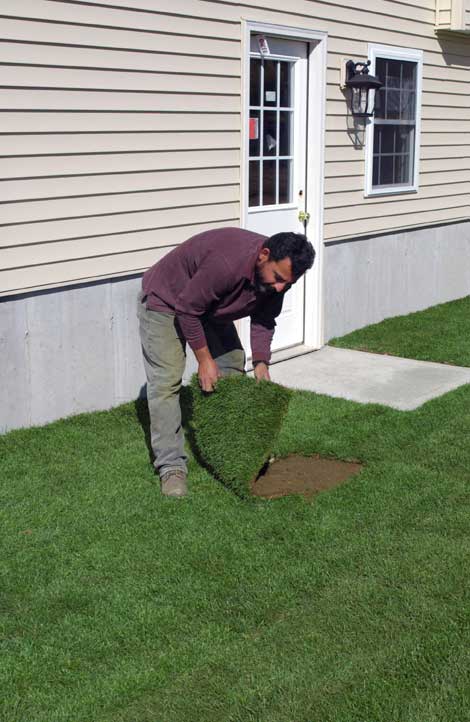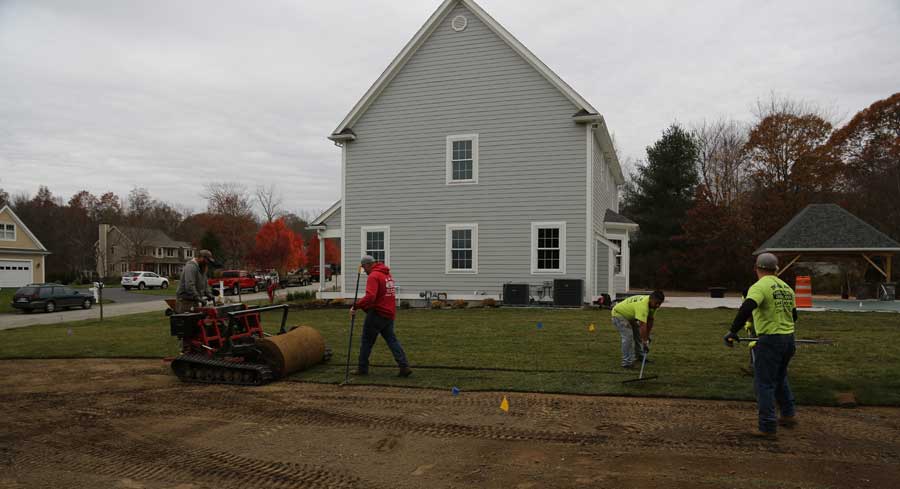SOD INSTALLATION GUIDELINES
 Have your area prepared prior to ordering your sod. Sod should be installed and watered immediately after being delivered.
Have your area prepared prior to ordering your sod. Sod should be installed and watered immediately after being delivered.
SOIL depth should be between 4″-6″ with good drainage under the soil. Add some lime and starter fertilizer to the soil and rake in. Make sure to rake in the starter fertilizer and do not let sod just sit on top of starter fertilizer as it can damage the tender young roots.
RAKE out the soil surface as smoothly as possible. Light rolling of the soil surface will insure total root contact with the soil. Any root area not touching the soil will dry out and die.
DAMPEN the ground where the sod will be installed. Sod will root quicker to a cool, moist soil condition that to a hot, dry soil condition.
 STAGGER the sod strips in tiers or lines. Be sure each strip abuts the next, but does not overlap the next strip. Try not to leave gaps in between the strips. Gaps will allow air to get in between the strips and dry the edges out. The resultant scheme of strips should resemble a brick wall. Staggering layers helps the seams to fill in quicker.
STAGGER the sod strips in tiers or lines. Be sure each strip abuts the next, but does not overlap the next strip. Try not to leave gaps in between the strips. Gaps will allow air to get in between the strips and dry the edges out. The resultant scheme of strips should resemble a brick wall. Staggering layers helps the seams to fill in quicker.
WATER newly installed sod frequently! Sod should receive 1″ of water daily. (You can measure this by putting a small can such as a tuna fish can where the water hits from the sprinkler. When there is an inch of water in the can, you know you have an inch on the lawn.) When the sod has rooted into the soil (usually 10-14 days) sod should receive at least 1″ of water per week.
MOW your lawn as soon as it needs mowing. A suggested mowing height is between 2″ – 2 1/2″.
FERTILIZE your lawn after sod has taken root in the soil (usually around 5 weeks after installation). Use a complete fertilizer-one containing nitrogen, potassium and phosphorus. BE SURE FERTILIZER IS WATERED IN!! Follow instructions on the fertilizer bag – DO NOT RISK BURNING YOUR SOD WITH TOO MUCH FERTILIZER! A heavier application of fertilizer is suggested in late November. This will aid in root growth during the winter (yes, roots do grow in the winter!) and promote a quicker green up in the spring. (We usually recommend you get on a good 4-step program for fertilizing.)
WEEDS and INSECTS can travel from nearby areas into your lawn. A preventative maintenance program will insure that your lawn will not fall prey to insects and weeds. Your local garden center can supply products for proper maintenance.
TALKING to your new sod lawn might not help-but it sure won’t hurt! Remember-your sod is a living plant. Treat it as such and it will bring years of enjoyment and beauty to you.

